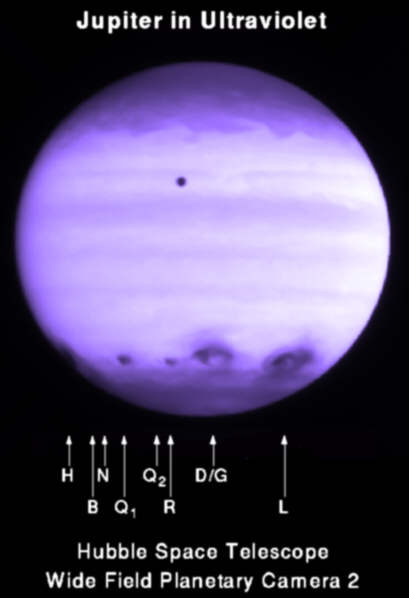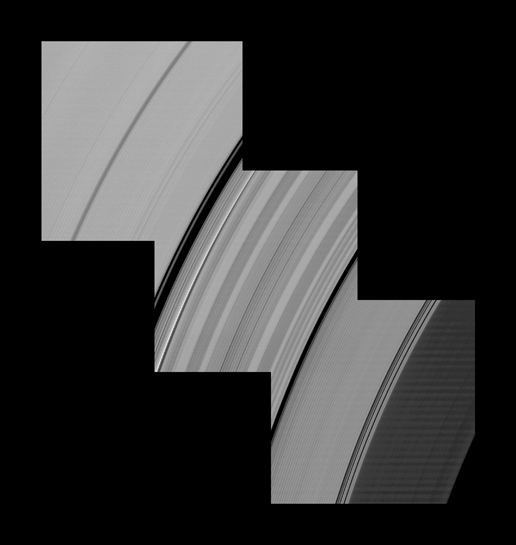Planetary Forensics

with fragments of comet Shoemaker-Levy 9.
Credit: Hubble Space Telescope Comet Team
July 1994. The planet Jupiter reels under the impact from a series of high-velocity objects slamming into its thick soupy atmosphere. Witnesses on Earth watch breathlessly as Jupiter turns slowly, revealing 21 black wounds slowly spreading their stain across Jupiter’s striped waist. All fingers point accusingly at comet Shoemaker-Levy 9, which astronomers knew to be hellbent on its suicide mission against Jupiter after the giant planet’s powerful gravitational field tore it apart in an earlier close encounter.
Unfortunately this sort of thing happens all the time – several times a decade for planets the size of Jupiter, and rather less often for smaller giants like Saturn. Most of the time the crime goes undetected, as the universe is a big place and even the vast network of amateur astronomers can only watch a small part of it at any one time.
But there’s good news. A team of astronomers recently discovered evidence that the Shoemaker-Levy 9 passed through Jupiter’s delicate system of rings (so thin and faint that they were only seen for the first time when the Voyager probes passed by Jupiter on their way to the edges of the Solar System), creating a hole which has been shifting and rippling closed ever since.

across Saturn’s D and C rings, are shown here in these Cassini
images taken one month before the planet’s August 2009 equinox.
Credit: NASA/JPL/Space Science Institute
Viewed with the right instruments, the rings show corrugations spiraling in towards the planet. When they compared these features with earlier images, they found that the spirals have been steadily tightening over time. By running backwards simulations of this change, they found that they straighten out into a single clear gap at around the time Shoemaker-Levy 9 would have been shooting through on its way to bombard Jupiter. An open and shut case proving that the ripple features were caused by an outside body passing through, or near, the rings.
What makes this discovery useful is the fact that such features are not unique – Saturn’s rings also have corrugated sections, and they are far brighter and more obvious. When the same backwards simulations are performed, astronomers find that Saturn experienced a similar collision some time in 1983, which we on Earth managed to completely miss. Saturn was on the opposite side of the Sun from Earth at the time, and is twice as far away as Jupiter, so we would have missed both the impact and not have seen the resulting scars. But at least poor Saturn can find solace that his story has finally been told, that we have become aware of his violent and battered past!
